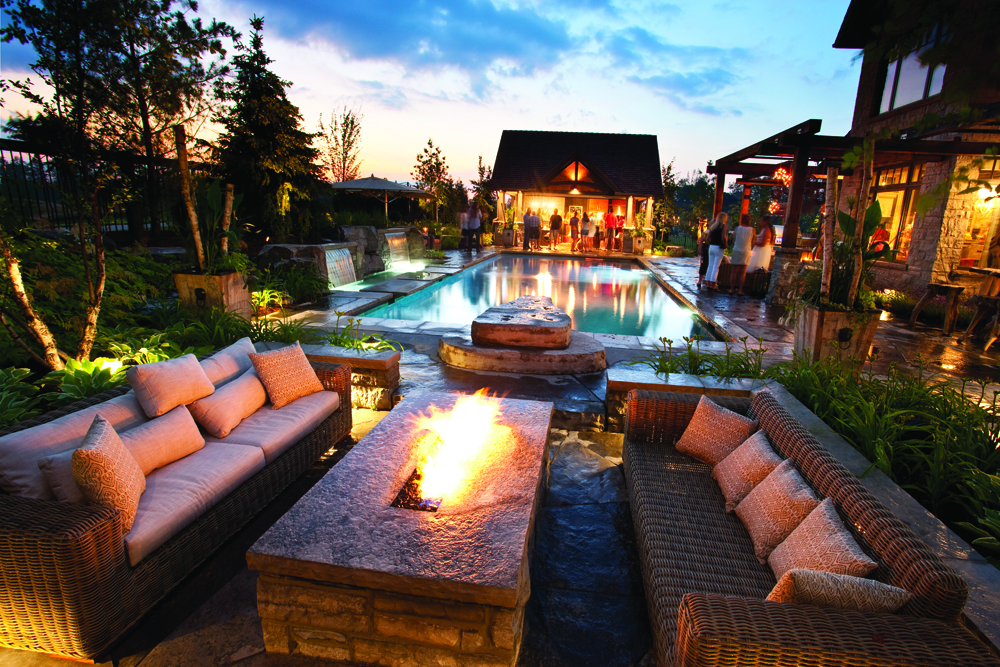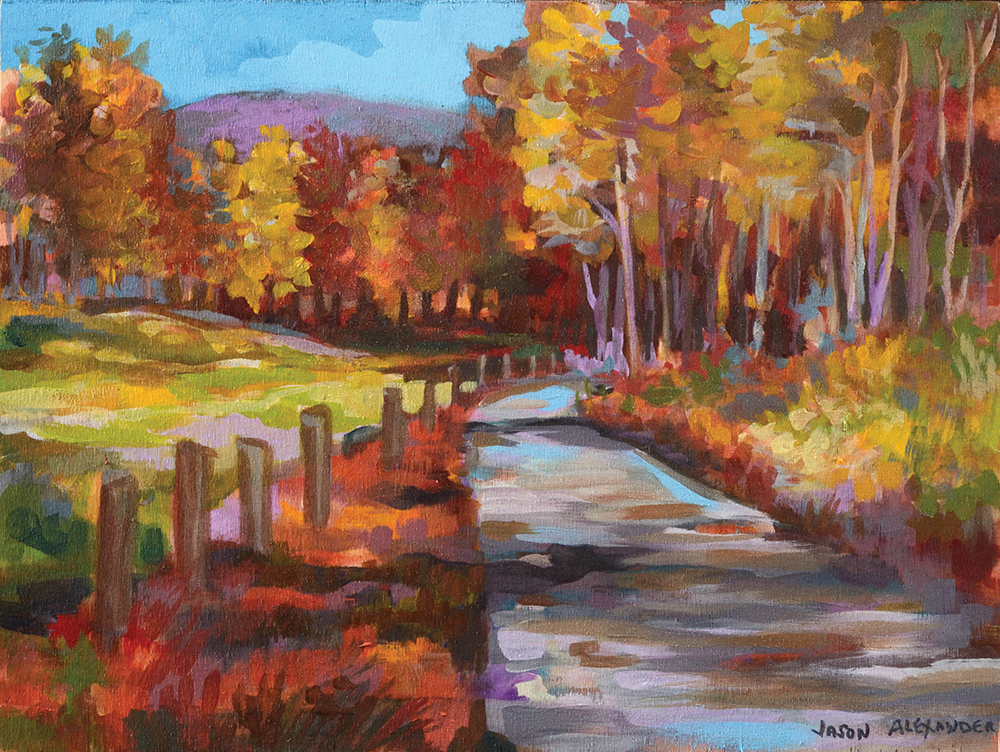How to keep your spirit bright this winter.
by Jessica Wortsman // Photography by Jessica Crandlemire
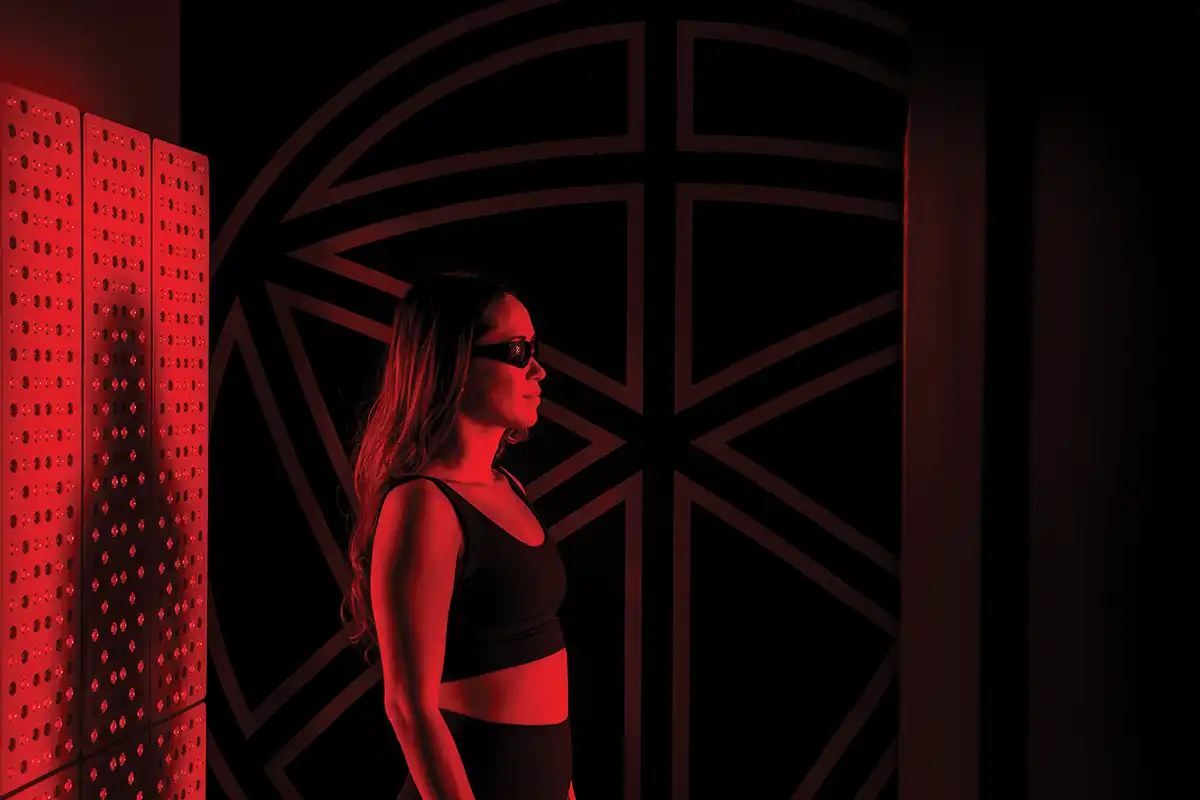
With the first snowfall of the season, the people of Southern Georgian Bay start gearing up. Skis are tuned, boards are waxed, skates are sharpened, all in anticipation of the thrill of winter sports. This is a region that truly welcomes winter. What we don’t welcome is the accompanying darkness. All winter long we wake up in the dark; we drive home from work in the dark. Our days are so short that even those gloriously sunny ones are never quite long enough to fill our cups. The lack of light can take its toll.
Seasonal affective disorder (SAD) is a form of depression linked to the change of seasons, most commonly during the transition to winter. During the darker months, our reduced exposure to sunlight disrupts our body’s internal clock and its production of crucial hormones that affect sleep and mood. It’s estimated that, annually, about three percent of Canadians grapple with SAD, while another 15 percent contend with its milder form, known by the more poetic moniker “the winter blues.” But there’s nothing poetic about it. Those affected experience difficulty concentrating, low energy, excessive sleepiness during the day, increased hunger, lack of interest in activities, social withdrawal, and feelings of hopelessness.
This winter, instead of leaving you to just muscle through the dark months, we’ve rounded up a few methods, some familiar, others a little more out there, to help you keep the winter blues at bay.
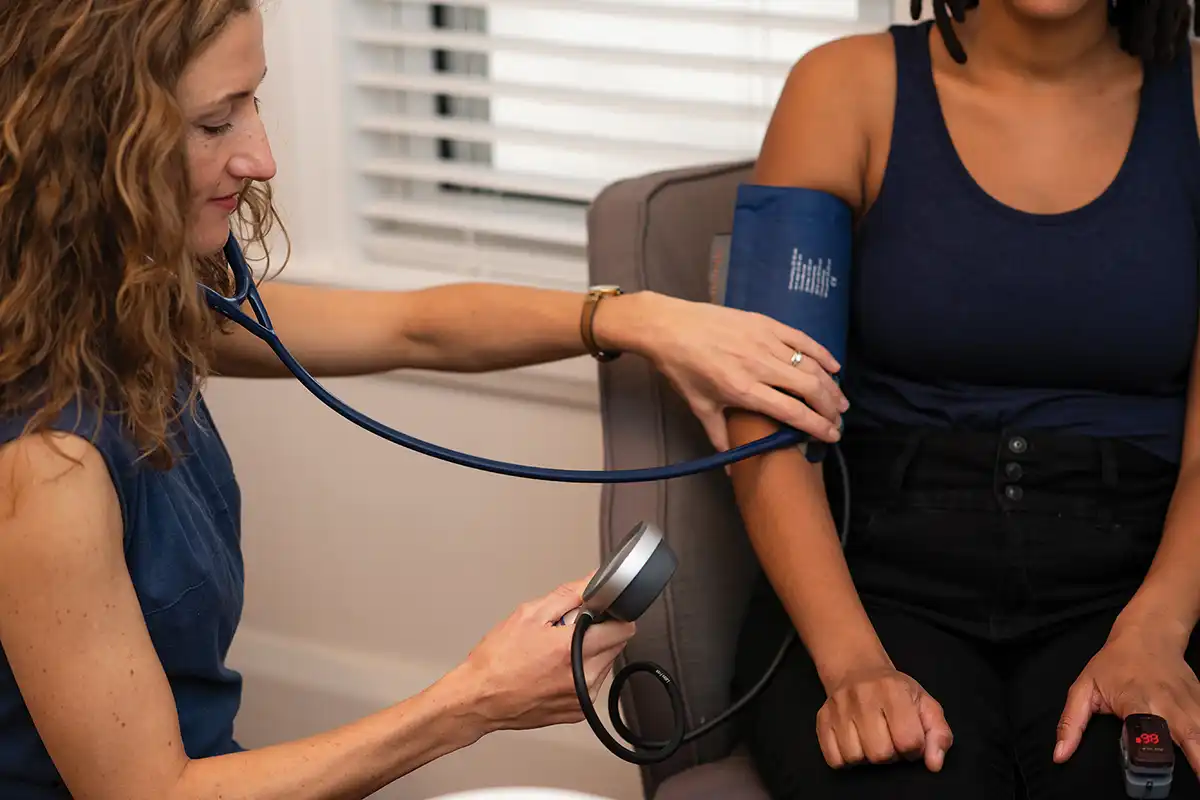
“Sometimes just changing your eating and sleeping pattern along with light exposure can have huge payouts in terms of improving mood.”
— Lia Sonnenburg, ND
Tried and True
Naturopathic doctor Lia Sonnenburg of Be Well Collingwood says her first intervention when working with new patients experiencing SAD is to check for nutritional deficiencies. She calls these “low-hanging fruit” because they’re so inexpensive, easy to fix, and they work.
“I will tell you that nine times out of 10, people come back with deficiencies that are related to mood.”
In fact, about 80 percent of Sonnenburg’s patients prove to be deficient in Vitamin D, which studies link to mood disorders, like depression and SAD, as well as cognitive decline. She cautions that too much can be harmful, so it’s crucial to speak with a professional and have your levels tested before supplementing.
SAD, says Sonnenburg, is also “intimately related to the amount of light exposure we have. Even when we control for vitamin D levels, we still see seasonal changes with light exposure.”
She recommends a minimum of 15 minutes of direct sunlight daily, within an hour of waking up. “Expose yourself to sunlight, even if it’s a cloudy day. It’s going to really help to set your circadian rhythm so that your brain realizes it’s daytime.” Light boxes can be a worthwhile substitute if actual sunlight isn’t an option.
And stop confusing your brain by using blue-light-blocking lenses during the day. “We should only be mindful of reducing blue light when it’s time to go to bed,” says Sonnenburg.
Without it, our brain thinks it’s time to shut down and start producing the sleep hormone melatonin.
Lastly, Sonnenburg highlights the extensive research supporting the positive influence of exercise on mood. So, getting in a daily sweat sesh, preferably during the early part of the day to avoid hindering restorative sleep, is sure to give your brain a boost of happy hormones and neurotransmitters such as endorphins, serotonin, dopamine and oxytocin.
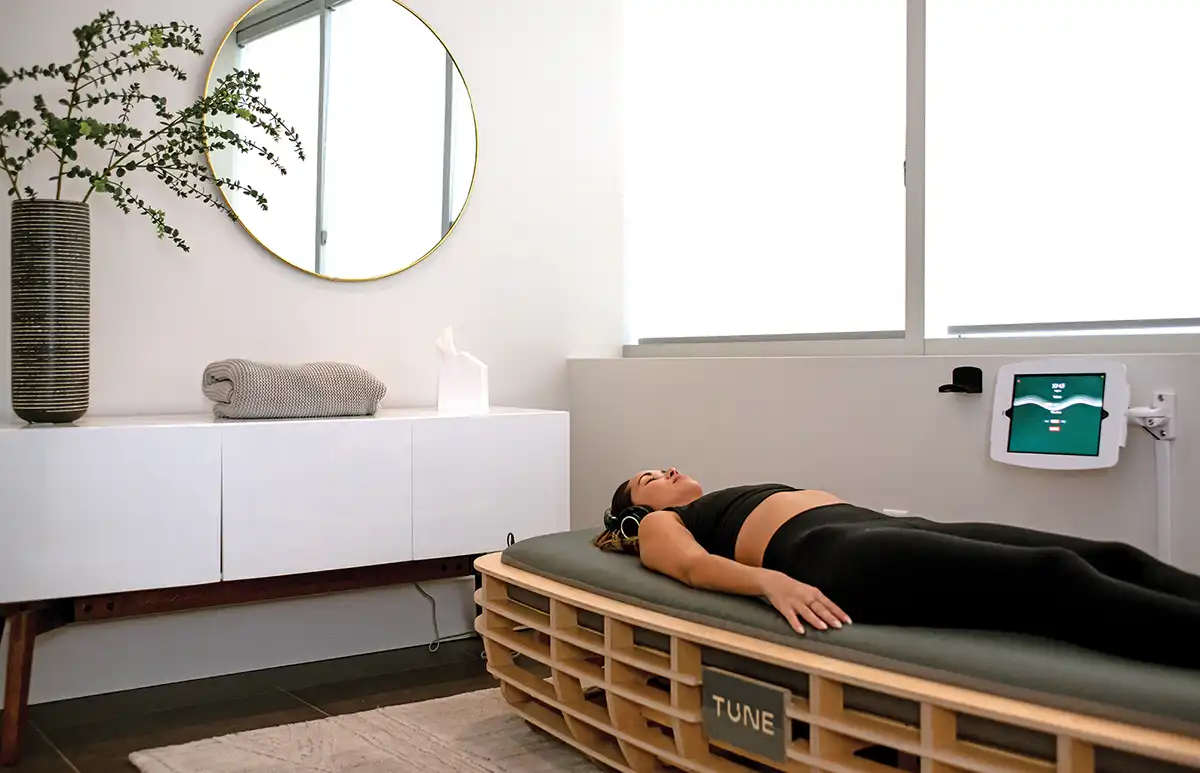
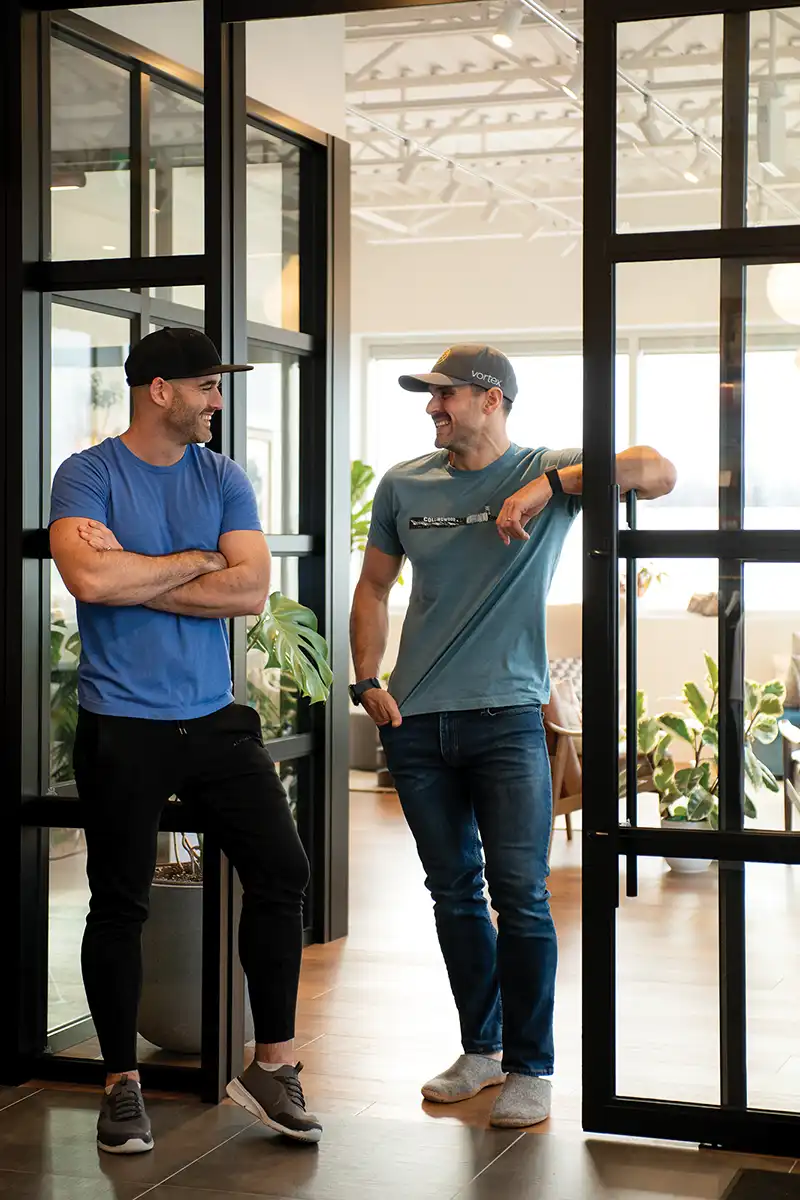
Something New
Wellness technology is an exciting emerging sector that offers some alternative approaches to addressing symptoms of SAD. At Vortex Wellness Studio in Collingwood, co-owners Daniel James and Steve McCrea have created a state-of-the-art, technology-driven wellness centre that offers a truly unique spa experience. Though sessions are experienced solo, their lounge space has a community vibe.
There are eight different types of sessions to choose from, each designed to help ease anxiety and stress, fight inflammation, reset the nervous system and improve sleep and overall well-being in their own way via cutting-edge technology.
James says their Red Light, Tune, NuCalm and Halo sessions work particularly well to combat the winter blues.
“The Halo,” says James of their low-intensity infrared sauna combined with salt therapy, “is a game-changer because it literally feels like a day at the beach.” He says the psychological benefits of the environmental change—of moving from the outside cold into the warm salty air of the Halo—are as significant as the physical ones.
Another must-try is NuCalm. It’s neuroacoustic software that gives users the benefits of hours of sleep, in just minutes, and is one of Vortex’s most popular sessions. If you ask Carolyn, a Vortex member, it’s popular for good reason. Dealing with significant stress and poor sleep, Carolyn began twice-weekly sessions with NuCalm a year ago. She now gets a solid seven hours of sleep per night and no longer requires supplements for adrenal stress, all of which she attributes to her sessions. “I don’t feel like I’m constantly vibrating anymore.”
For Sarah, another Vortex member, the Red Light sessions give her the energy boost needed to get through those long winter afternoons, but it’s NuCalm that she credits with having the biggest impact on her. It’s her go-to when she’s feeling stressed, depressed, or just needs to get through the day without yelling at anyone. Moreover, she says it’s helped her “turn off her brain” so she can sleep at night. The key, says Sarah, is persistence. “You don’t take vitamin C for one day and expect to feel better the next day. It’s a commitment.” It took her about two months of twice-weekly sessions before she really noticed the benefits.
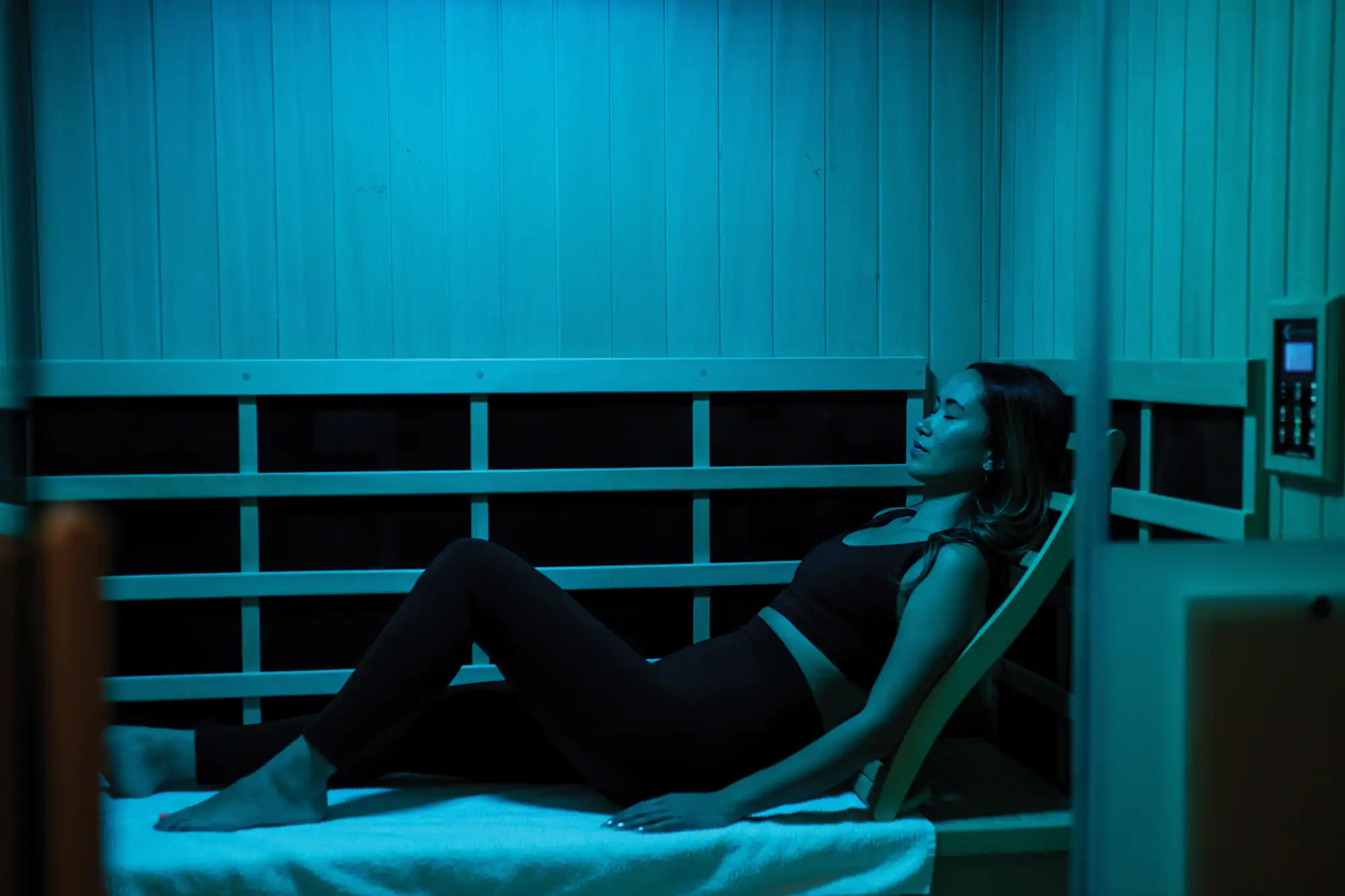
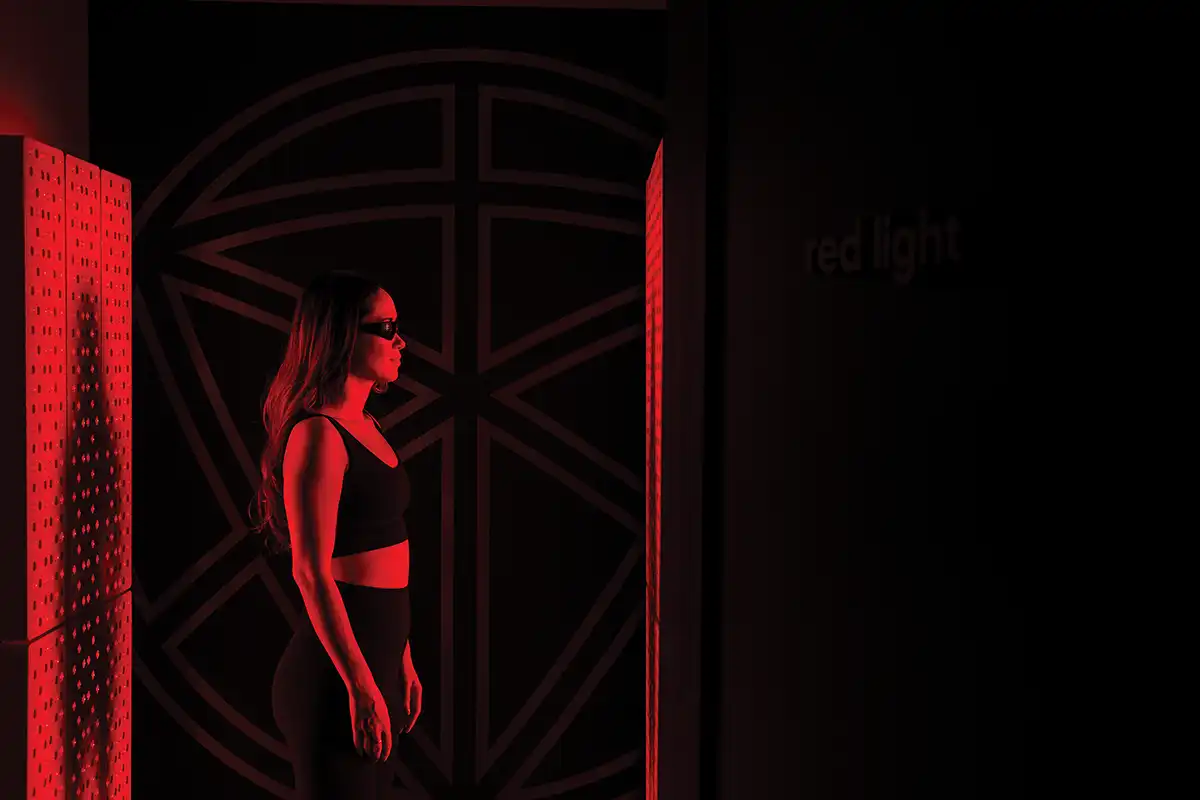
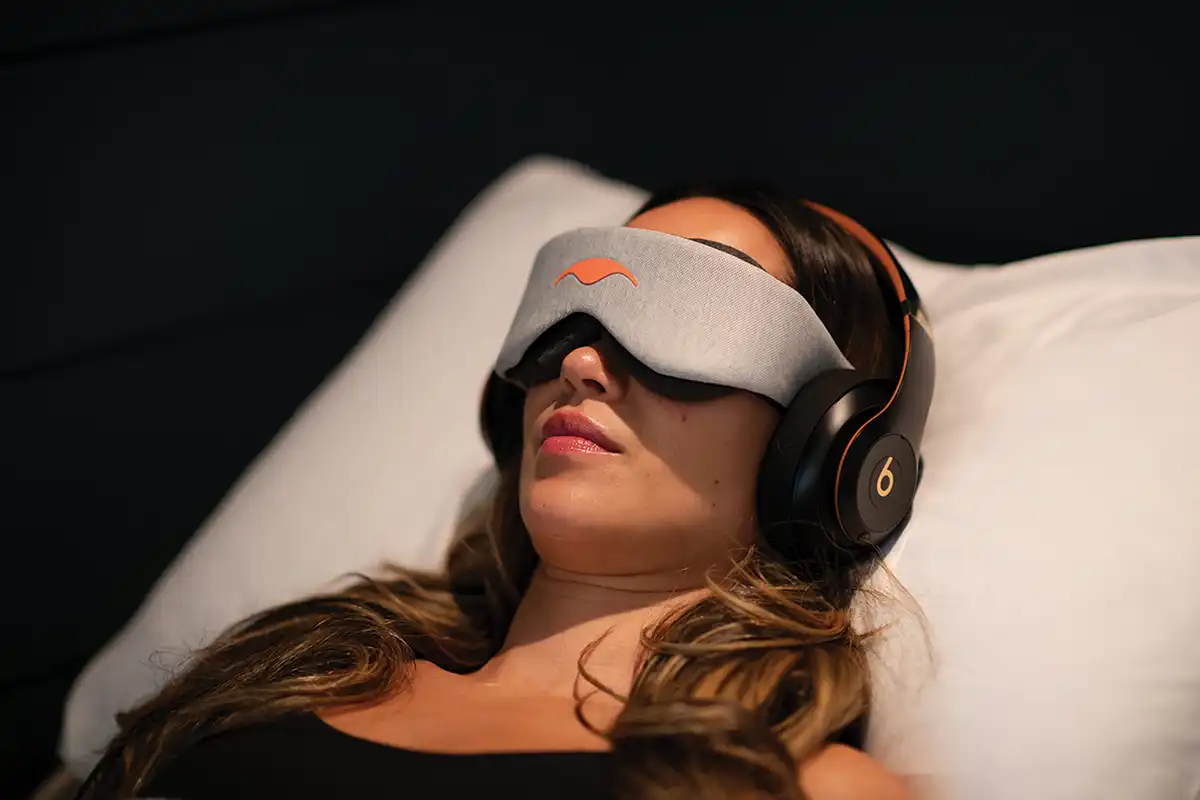
Look Into the Light
Julie Mitchell, owner of Beam Light Studio in Thornbury, also boasts an experience you just have to try in order to understand, described as advanced light meditation. Users spend an hour in front of a patented lamp system designed to put you into a state of deep calm.
Varying light frequencies stimulate the pineal gland, taking users on a visual journey of colour and shape.
Sounds trippy, right? Well, it can be, and some users, like Beam client Tarynn Lennox, even experience expanded states of consciousness. She says, “As someone who suffers from anxiety and seasonal depression, the sessions have provided a safe place for me to explore meditation and spiritual journeys.”
In fact, Mitchell asserts that a one-hour session gives you the benefits of approximately 400 hours of deep meditation practice, something most people don’t achieve even in a lifetime of practice.
“It’s a technology that can really support well-being through seasonal affective disorder, especially when we’re having shorter days and we’re feeling low because it’s cold and we’re inside and we’re withdrawn. It’s a really beautiful thing to do for yourself. It’s self-care 101.”
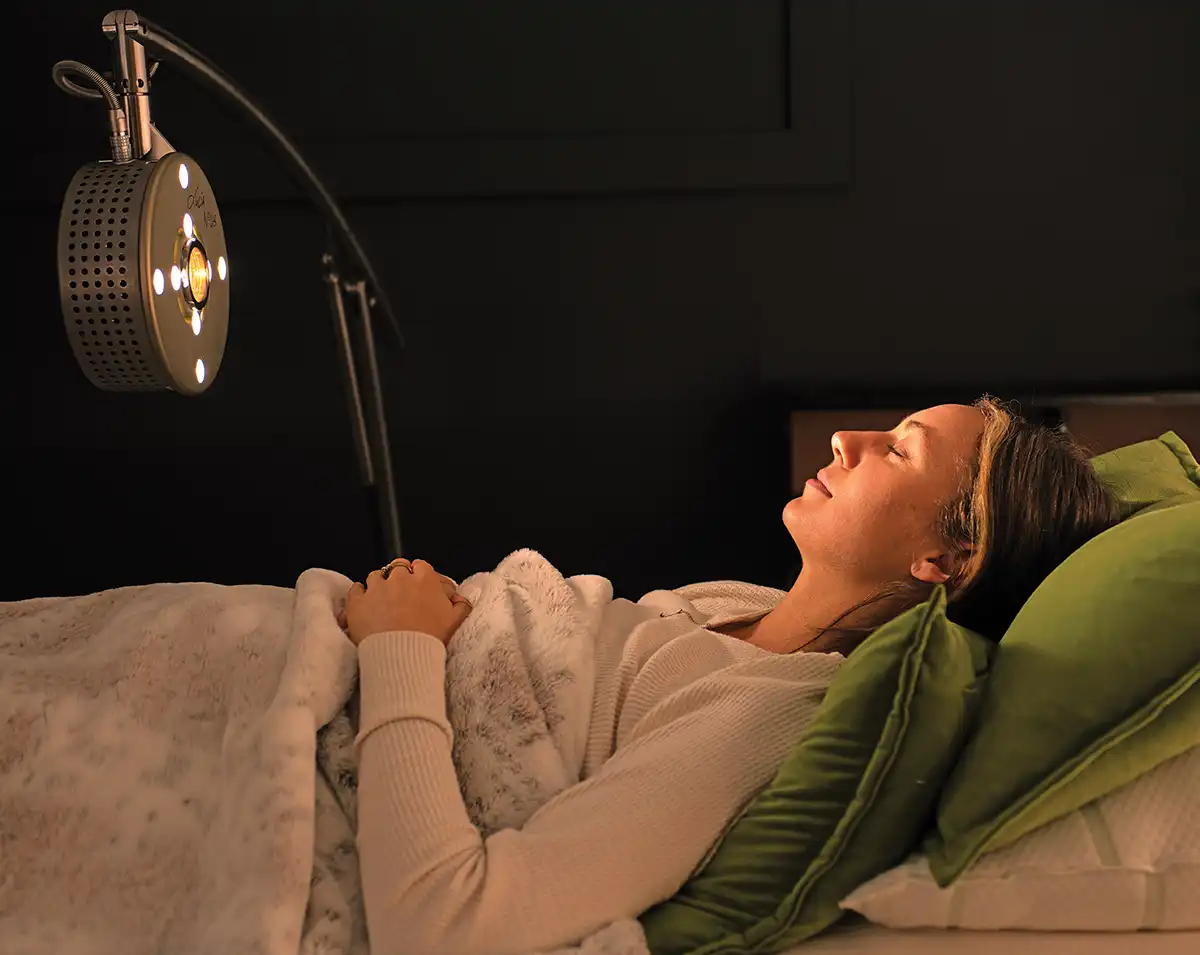
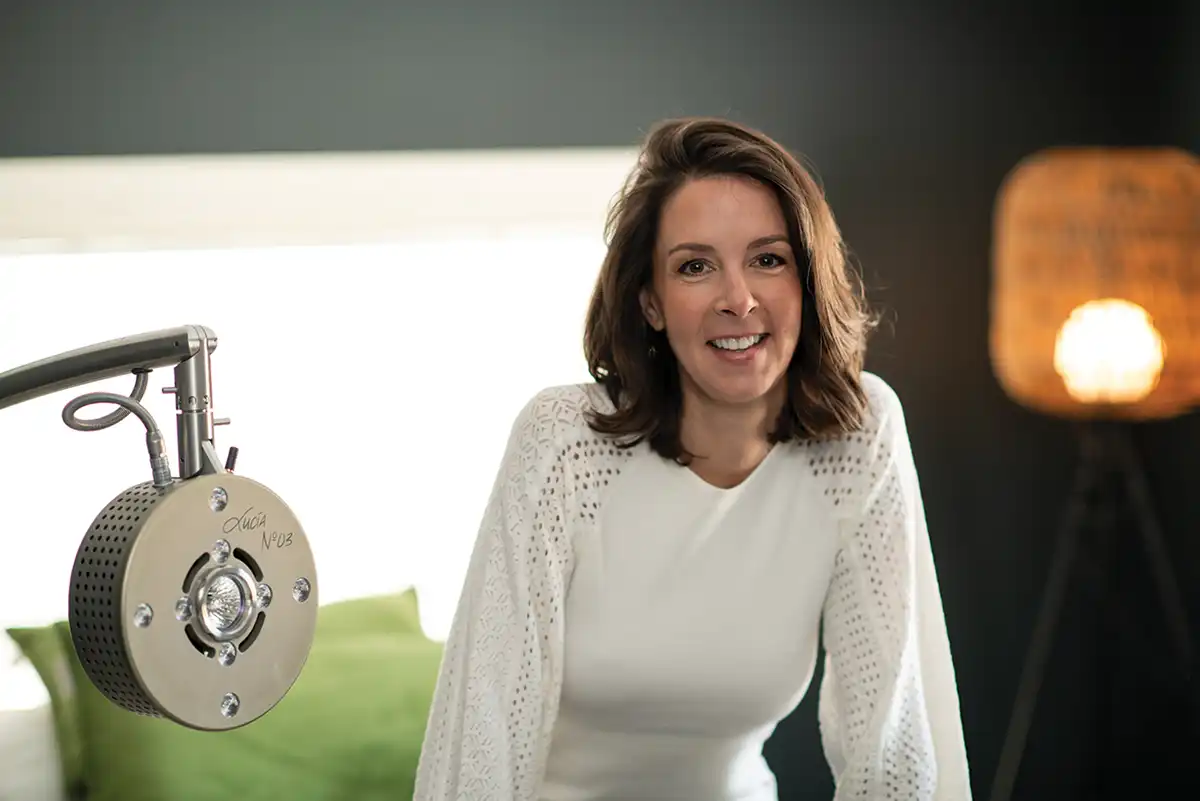
Therapies for Seasonal Affective Disorder
When you’ve had enough of the dark and a trip to Aruba is out of the question, luckily there are local options to help lift your spirits that cost a heck of a lot less than a plane ticket.
NuCalm
What it is: Patented neuroacoustic software that guides the brain into the Theta brainwave state—the transitional state between wakefulness and sleep—to provide deep relaxation and recovery.
How it works: Users lie down, put on headphones, an eye mask and a bio-sensing processing sticker on their wrist and select the program of their choosing. Then they drift off. Sessions range from 20 to 50 minutes.
How it feels: Like being in a semi-conscious state. Afterwards, users report feeling rested, calm, energized and focused.
Where to find it: Vortex Wellness Studio in Collingwood, vortexwellness.ca.
Advanced light meditation
What it is: Developed by a neurologist and a psychologist, the Lucia N°03 Hypnagogic Light is a powerful lamp programmed to stimulate the pineal gland, which is in charge of regulating the body’s sleep/wake cycle. In response to its exposure to light and darkness, the pineal gland secretes some very important hormones, like melatonin (for sleep) and serotonin (for good mood).
How it works: Users select their desired program, lie down, and close their eyes. The lamp head is positioned facing the pineal gland and then the 50-minute journey begins.
How you feel: A visual experience that is both meditative and stimulative. Many feel a sense of calm, joy and even euphoria afterwards and report improved sleep, less chronic pain, and a deeper sense of clarity and self.
Where to find it: Beam Light Studio in Thornbury, beamlightstudio.ca.
CBT for SAD
What it is: Cognitive behavioural therapy (CBT) is a type of talk therapy which helps you develop a set of skills to identify and challenge negative thought patterns and behaviour.
How it’s used to treat SAD: Along with replacing negative thoughts with more positive thoughts, treatment includes identifying and engaging in winter activities that are pleasurable (whether indoors or outdoors).
Results: CBT has been shown to be effective, particularly when used proactively, at treating seasonal affective disorder.
Where to find it: There are many local and online therapists trained in CBT. They can be found through psychologytoday.com/ca.






